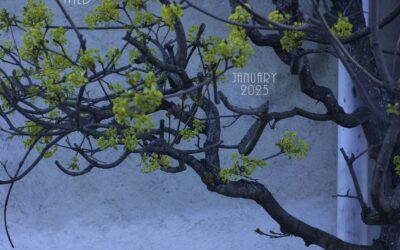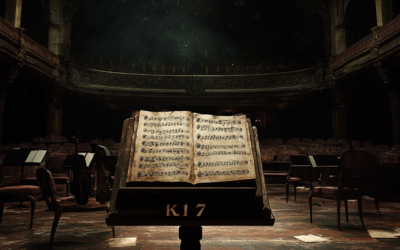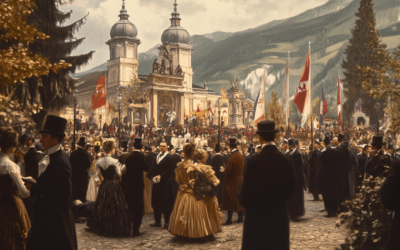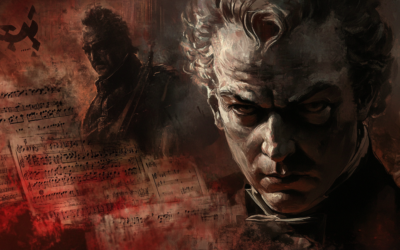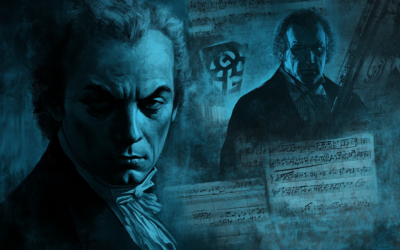Truth or Deception?
The Curious Case of Mozart’s "Lullaby"
Examining the murky history of “Schlafe mein Prinzchen, schlaf ein” and its questionable authorship
In the sprawling world of Mozartian myths, few tales have endured as long or as stubbornly as the origins of the lullaby Schlafe mein Prinzchen, schlaf ein (“Sleep, My Little Prince, Go to Sleep”).
For nearly two centuries, this piece has been attributed to Wolfgang Amadeus Mozart, despite enduring questions over its authenticity.
First published by Nissen, Constanze Mozart’s second husband, it was only in 1826 that he informed publisher André of the piece’s dubious provenance. While “experts,” Nissen claimed, deemed it worthy of Mozart, Mozart’s sister, Nannerl, held no memory of her brother writing such a tune.
Intriguingly, Constanze, usually vocal in promoting her husband’s legacy, made no public comment, though her personal diary reveals a hint. In a September 17, 1798 entry, she wrote of sending “another piece of Mozart’s in place of the lullaby” to Dr. Feuerstein. Did she suspect, even then, that Mozart may not have authored this work?
Mozart: The Fall of the Gods
This book compiles the results of our studies on 18th-century music and Mozart, who has been revered for over two centuries as a deity. We dismantle the baseless cult of Mozart and strip away the clichés that falsely present him as a natural genius, revealing the contradictions in conventional biographies. In this work, divided into two parts, we identify and critically analyze several contradictory points in the vast Mozart bibliography. Each of the nearly 2,000 citations is meticulously sourced, allowing readers to verify the findings. This critical biography of Mozart emerges from these premises, addressing the numerous doubts raised by researchers.
"Truth in music, as in history, requires more than wishful attribution."
Mozart: The Fall of the Gods
Constanze’s Unreliable Testament
Constanze Mozart remains a controversial source on matters of Mozart’s oeuvre. Could her diary entry imply her own doubts? Over time, the lullaby’s shaky origins gained traction, with figures like Johann Evangelist Engl, a prominent advocate of Mozart’s legacy, affirming the lullaby’s authenticity in the 1892 Annual Report of the Mozarteum. His stance solidified the piece in the Köchel catalogue as K.350. But musicologist Max Friedländer refuted this claim, proving that this celebrated lullaby was, in fact, the work of Bernhard Flies, a minor composer who published it in 1795. Later research revealed that even Flies had borrowed it from an earlier melody by Johann Friedrich Anton Fleischmann. Over time, Fleischmann’s lullaby became mistakenly attributed to Flies, then to Mozart—a confusion that would last over fifty years and persist, falsely, to this day.
An Ideological Battle for “Mozart’s” Lullaby
In 1944, as authenticity disputes resurfaced, German musicologist Herbert Gerigk, known for his involvement with Nazi-aligned musical publications, took a vehement stance. For Gerigk, Friedländer and Einstein’s work discrediting the lullaby’s Mozartian origins was not just a scholarly objection—it was an affront to Aryan cultural purity. Rather than acknowledging scholarly evidence, he painted Flies, Friedländer, and Einstein as scheming Jewish interlopers. “The German people desire this piece for Mozart,” he argued, sidestepping questions of authenticity in favor of ideology. The result was a chilling example of musical propaganda in service of the regime.
The Apocryphal Piece That Refuses to Die
Today, this questionable lullaby persists in Mozart’s name, nestled innocuously among beginner’s scores. My First Book of Mozart, arranged by David Dutkanicz, includes it as a legitimate Mozartian work, and the Mozart-Schaum Edition, aimed at young pianists, introduces it as “authentic.” Both editions acknowledge its contentious history only in modest footnotes, offering a single line to hint at the debate: “Most people believe this to be Mozart’s work, others say it is spurious.” But, one might ask, does this vague disclaimer suffice to remedy two centuries of mistaken identity?
You May Also Like
Constanze Mozart’s Enduring Love
Although some have doubted her devotion, Constanze’s own words and actions illustrate a widow deeply committed to preserving Mozart’s legacy. Diaries, personal correspondence, and eyewitness testimony all challenge the notion that she neglected his memory—while the circumstances around his burial grow ever more perplexing.
A Revealing New Interview on His Thematic Catalogue
We’re excited to present a brand-new interview that challenges many of the long-held assumptions about Mozart’s Thematic Catalogue (1784–1791). Conducted by Swedish journalist Henry Grynnsten, this conversation delves into groundbreaking forensic techniques—like advanced ink analysis and digital image processing—that may change the way we view Mozart’s late works.
The Rattling Symphony: A Critical Take on K. 17
Often attributed to Mozart, the K. 17 symphony is anything but refined. Lacking orchestration and filled with gaps, it raises more questions than answers about its true authorship.
The Hidden Origins of the Salzburg Festival: A Nationalist Dream
The Salzburg Festival, far from being a mere celebration of Mozart’s genius, was born out of nationalist ambitions during a turbulent period in Austro-German history. Conceived by figures like Max Reinhardt, Heinrich Damisch, and Friedrich Gehmacher, the festival was deeply rooted in ultranationalistic ideals, transforming Mozart’s legacy into a tool for cultural dominance. The truth behind its founding has long been obscured, but the primary sources tell a different, darker story.
Mozart, Wagner, and the Nazi Myth
The Führer’s admiration for Wagner’s racially charged ideology not only influenced the policies of the Nazi regime but also reshaped the legacy of Mozart. Under National Socialism, Mozart was not celebrated as a universal genius but as a symbol of German purity and superiority. His music, stripped of its international influence, was rebranded as an expression of Aryan identity, intended to unify and inspire the German people.
Mozart, the Anschluss, and Nazi Propaganda
Following the 1938 Anschluss, the Nazi regime rebranded Mozart as the quintessential German composer, using his image to promote unity between Austria and Germany. The Salzburg Festival became a platform for Nazi propaganda, distorting Mozart’s legacy to fit their nationalistic and racial agenda.



